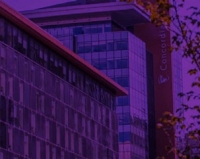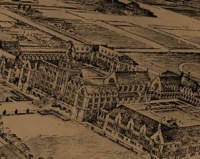“Concordia has matured into a world-class learning and research institution while never losing sight of its roots,” says President Alan Shepard. “The result is a university in which we can all take pride, with goals grounded in dynamism and social responsibility.”
Hardly anyone gives the shuttle bus ride between the Sir George Williams and Loyola campuses a second thought today, but the idea of those founding institutions merging initially caused some unease. “When you join together two lively institutions, each with its own philosophies and ways of doing things, each firmly dedicated to freedom of thought and speech, you must expect a measure of friction,” said the late John O’Brien, former rector and vice-chancellor, one week prior to the merger.
Fortunately, faculty, staff and students quickly realized that while Loyola and Sir George Williams differed in character, they shared the goal of delivering an accessible, quality higher education. In 1975, O’Brien observed: “There are still people, particularly from other parts of Canada, who say, ‘So you did finally get together.’ Yes, we have got together, there is a new university, and its reputation is being affirmed here and now.”
Named after the Englishman who founded the Young Men’s Christian Association, Sir George Williams traces its origins to classes offered by the YMCA in 1873. The institution grew into Sir George Williams College by 1926 and began granting university degrees in 1936-37. By 1959, it was the first Canadian university to offer a full range of evening programs.



